|
View previous topic :: View next topic
|
|
| Author |
Message |
RoundTheBend
I miss the comfort in being sad

Location: Ground Control

|
- #121
- Posted: 08/09/2018 04:09
- Post subject:
|
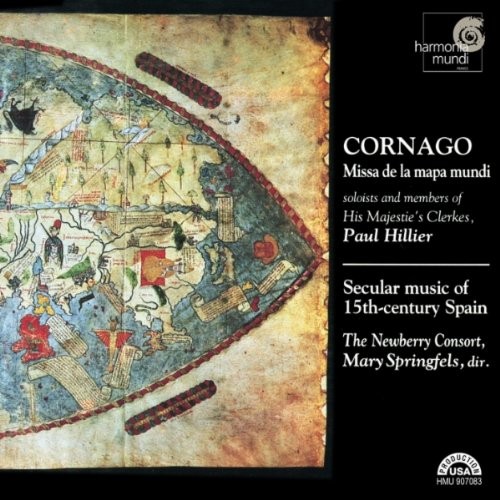
Cornago: Missa De La Mapa Mundi; Secula...Springfels
Era: Ey, around the times of talking trees
Forms: Your mom
Score: 198198165065198
Thoughts:
I wasn't terribly privy to the mass, but the secular music gon dun gooder.
Info:
Cornago's activity is attested during the middle decades of the 15th century, and the Mass is a unique example of the period. It is contemporaneous with Dufay's cantus firmus settings, and shares the distinction with the Missa Se la face ay pale of being the earliest known mass based on a secular tune (track #1). In general design, it is very similar to Franco-Flemish polyphony of the period and indeed it has been suggested that Cornago came from Belgium.
The songs include both lighter and more serious pieces, as well as several distinct settings of the famous bass-theme, La Spagna. Item #12 is a song by Cornago for which Ockeghem composed a fourth voice, apparently during his trip to Spain. Indeed, the Mass has some stylistic similarity to Ockeghem's output as well, though the tunes are certainly unique. The songs recorded here present some of the variety of Spain in this period.
The above includes a nice selection of Spanish secular music from the 15th century, in styles similar to other Continental songs of the period. Spanish secular music was to retain a unique and independent existence well into the Baroque.
|
|
|
|
|
Back to top
|
|
|
|
RoundTheBend
I miss the comfort in being sad

Location: Ground Control

|
- #122
- Posted: 08/27/2018 01:29
- Post subject:
|

La Justa • Madrigals And Ensaladas Fr... Colombina
Era: Renaissance
Forms: Madrigals and Ensaladas
Score: 81
Thoughts: It was pretty good. Nothing mindbogglingly interesting. But also better than most.
Info from Medieval.org... And here I thought they were talking about salads.
Mateu Fletxa (1481-1553) was the first Spanish composer to develop the Ensalada genre to a high level of formal perfection. His work continued to influence subsequent generations of composers, including in the madrigal genre.
The term ensalada is derived from singing simultaneous lines in different languages; the material is generally derived from Christmas allegories, occupying a position between art & folk music. In the hands of Fletxa (Matteo Flecha, the elder), these allusions reach a high degree of subtlety and pervasiveness.
|
|
|
|
|
Back to top
|
|
RoundTheBend
I miss the comfort in being sad

Location: Ground Control

|
- #123
- Posted: 08/27/2018 01:32
- Post subject:
|
This project has felt like work for me lately instead of interesting as it once was. A bit of burnout, you could say.
But I am glad I gave these albums a listen and will remain in my "wheelhouse" so to speak (meaning I'll probably listen to them someday again). In order of awesome (85 to 82 scores):
Choral Settings Of Kassiani
The Pilgrimage To Santiago
Hildegard Von Bingen: Ordo Virtutum
Tudor Dance
Magna Melodia - Medieval Music From The Time Of The Magna Carta
Hildegard Von Bingen: Canticles Of Ecstasy
D'amor Cantando: Ballate E Madrigali Di Trecento
Music For A Medieval Prince
Music From Ancient Rome: Volume 1 - Wind Instruments
Walther Von Der Vogelweide: Lieder Von Macht & Liebe
Music Of The Gothic Era
Alfonso X El Sabio: Cantigas De Santa Maria
Fortune My Foe
The Unknown Lover: Songs By Solage And Machaut
Machaut: Ballades
Francesco Landini And Italian Ars Nova (Alla Francesca)
Ockeghem: Requiem / Missa Prolationum / Intemerata Dei Mater
Josquin Desprez: Stabat Mater; Motets
Josquin Desprez: Missa Pange Lingua
|
|
|
|
|
Back to top
|
|
RoundTheBend
I miss the comfort in being sad

Location: Ground Control

|
- #124
- Posted: 08/30/2018 01:46
- Post subject:
|

Josquin Desprez: Adieu, Mes Amours; Cha...ique Visse
Era: Renaissance
Forms: Chanson
Score: 82
Thoughts: I felt the collection worked great with vocal and non-vocal performances and ranged from serious music to enjoyable music. Needs a good hearth.
Info from Medieval.org:
A collection of polyphonic chansons, mostly sung but some instrumental versions as well. An interesting contrast comes from El grillo, an Italian song on the cricket. The last piece is the famous funeral ode to Josquin's master, a motet-chanson which used the Requiem Aeternam chant as tenor for Jean Molinet's poem.
Douleur me bat (5 voices, 4 viols)
Adieu mes amours (4 viols)
Plusieurs regretz (2 voices, 4 viols)
Petite camusette (3 voices, 3 viols)
Mille regretz (4 voices, lute)
Mille regretz (lute)
En non saichant (5 voices)
J'ay bien cause (3 voices, lute)
Nimphes, nappés (6 voices, 4 viols, lute)
Ile fantazies (4 viols)
La plus des plus (4 viols)
Plus n'estes ma maistresse (4 voices, lute)
Cueurs désolez (voice, 4 viols)
Plaine de dueil (5 voices, 4 viols)
Busnois/Josquin: Fortuna desperata (4 viols)
Faulte d'argent (5 voices, lute)
Cueur langoreulx (2 voices, 4 viols)
Fors seulement (lute)
Je me complains (5 voices, 4 viols)
Si congié prens (2 voices, 4 viols)
Tenez moy en vos bras (6 voices, 4 viols, lute)
El grillo (4 voices, lute)
Si j'ay perdu mon amy (4 viols)
Parfons regretz (5 voices)
Vous l'arez s'il vous plaist (3 voices, 4 viols)
Allégez moi (6 voices, lute)
Déploration sur la mort de Johannes Ockeghem (5 voices)
|
|
|
|
|
Back to top
|
|
RoundTheBend
I miss the comfort in being sad

Location: Ground Control

|
- #125
- Posted: 08/30/2018 02:58
- Post subject:
|
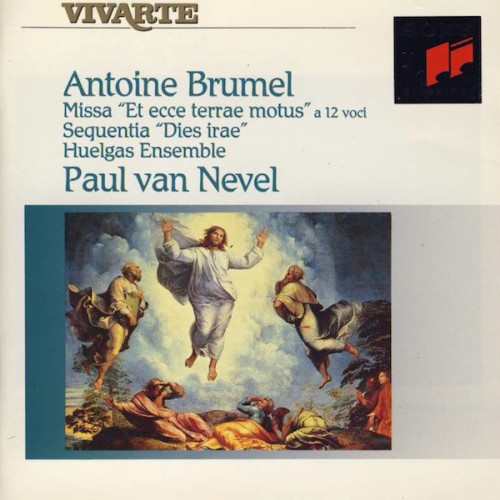
Brumel: Missa "Et Ecce Terrae Motu...s Ensemble
Era: Renaissance
Form: Mass in 12 voices (Polyphony)
Score: 85
Thoughts: Wow - this is at least worth a visit. 12 voices, yet doesn't feel overpowering, yet incredibly powerful and beautiful. Layers of beauty. Final track introduces the trombone, which I don't think I've heard yet in the Renaissance.
Info from Medieval.org:
Antoine Brumel (c.1460-c.1515) may have been the only major Franco-Flemish polyphonist of the Josquin generation to be born within France proper, perhaps near Chartres. The earliest historical record of Brumel is from Chartres in 1483. He held a master's position in Geneva from 1486, and left in 1492 under mysterious circumstances. He is mentioned again at Laon in 1497, and was placed in charge of the children at Notre Dame in 1498, where he soon resigned. In 1501, he was in Chambéry, and finally took the prestigious appointment at Ferrara in 1506, after a year of negotiations. The Ferrara chapel was disbanded in 1510, and nothing concrete about Brumel is known afterward.
Brumel was one of the composers to whom Petrucci devoted a volume of masses (1503), and indeed his masses continue to be his most famous works. Among his fifteen surviving mass cycles and four Credos, all are in four parts but one: The twelve-part Missa Et ecce terrae motus is by far his most popular work today. Brumel's Missa pro defunctis is also notably the first to set the Dies irae to polyphony. Brumel wrote over thirty motets in a variety of styles, as well as a handful of secular songs and instrumental pieces. His style progresses from an irregular approach to rhythm in overlapping parts to more emphasis on strongly declamatory passages. His increasingly chordal style is often taken to reflect Italianate tendencies, a trait he shares with Weerbecke.
Brumel's 12-voice mass is one of the most unusual compositions of the period. It is popular mainly for its nearly chordal harmony and frequent use of cross-rhythms.
Missa Et ecce terrae motus (a 12; voices)
Kyrie Eleison
Christe Eleison
Kyrie Eleison
Gloria
Credo
Sanctus
Pleni Sunt Coeli (a 8 )
Hosanna
Benedictus (a 8 )
Hosanna
Agnus Dei I
Agnus Dei II (a 6)
Agnus Dei III
Sequence: Dies Irae - excerpt from "Missa pro Defunctis" (voices, 4 trombones)
|
|
|
|
|
Back to top
|
|
|
|
RoundTheBend
I miss the comfort in being sad

Location: Ground Control

|
- #126
- Posted: 08/30/2018 16:02
- Post subject:
|
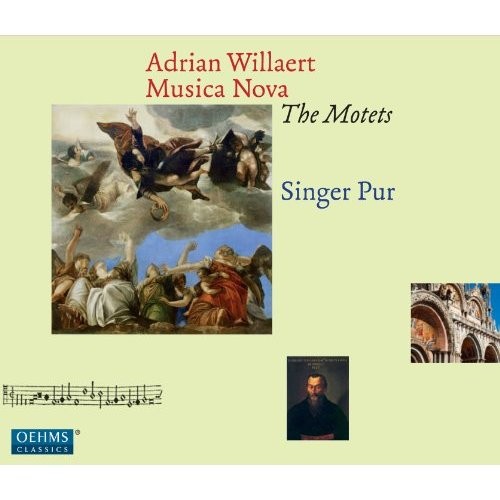
Willaert: Musica Nova - The Motets by Singer Pur
Era: Renaissance
Form: Vocal Motet
Score: 82
Thoughts: Well balanced and beautiful polyphony. None of it felt like a math problem, rather the multiple voices opened up like a new dimension of sound and melody. I agree with the synopsis that the interpretation doesn't feel modern. I wish I could hear this in a cathedral, but the recording is pretty solid - open, yet immediate.
Info from Archivmusic.com:
When Adrian Willaert (c.1490-1562) arrived in Venice in 1527, he was the first Flemish musician to be appointed maestro di cappella of St. Mark’s basilica, and the last of a long and distinguished line of Franco-Flemish musicians to dominate the Italian musical scene in the 15th and early 16th centuries. Although his position gave him the opportunity, not to say the duty, of supplying music for Mass and Vespers for his celebrated choir, his output does not appear on records as frequently as the music of his successors, most notably Monteverdi. Only a fraction of his 150 motets are available, and I have only three of his eight Masses in my collection. (His madrigals are better represented.) The Musica Nova , from which these motets come, was published by Gardano in 1559 at the behest of Alfonso d’Este, soon to be duke of Ferrara, who acquired the manuscript from the singer Polissena Pecorina. It contained 25 madrigals and 27 motets, works dating back through his career but kept apart from other music already published earlier. With the madrigals issued earlier ( Fanfare 33:4), Singer Pur has now recorded the entire publication. In the previous review, I indicated that I had not found any of the madrigals on records (no reader has written to offer any information on this).
Most of these motets have two parts; some have three, and O admirabile commercium has seven parts. The motets are set out here in order of themes, not the order of the published book, where the motets are grouped in ascending order of settings for four, five, six, and seven voices. The first disc is generally in praise of the Blessed Trinity, the second is entirely Marian in devotion, and the third is penitential, concluding with the sequences of Easter and Pentecost. Except for the last two pieces, it is remarkable that three very full discs can be equally divided along three distinct themes. The texts are from the Psalms and other scriptural and liturgical sources. Considering that the composition of these motets may have extended over a period of some years, the polyphonic style is notably uniform.
One motet that is special for its breadth is O admirabile commercium , the seven-part motet that takes its text from the seven antiphons for Lauds and Vespers of January 1. (While this is the feast of the Circumcision, it is structured as a Marian feast, and since 1970 has been known as the feast of Mary, the Mother of God.) This motet for five voices runs almost half an hour. The liturgical texts draw on biblical allusions, as in Rubum quem viderat , the third section, which takes the account of the burning bush unburnt from Exodus as a parallel to Mary’s giving birth while her virginity remained intact. Singer Pur’s execution is uniformly exquisite, with four male singers added to the six members of the ensemble (five former choirboys at Regensburg cathedral plus a soprano). Along with the Cinquecento disc (34: 2), these two sets of Musica Nova may be regarded as the preeminent observance of the composer’s 450th anniversary. With this recorded evidence, Willaert demonstrably occupies a place leading up to the glories of the High Renaissance that the next generation of composers achieved. Be sure to hear this impressive set.
FANFARE: J. F. Weber
|
|
|
|
|
Back to top
|
|
RoundTheBend
I miss the comfort in being sad

Location: Ground Control

|
- #127
- Posted: 08/30/2018 21:05
- Post subject:
|
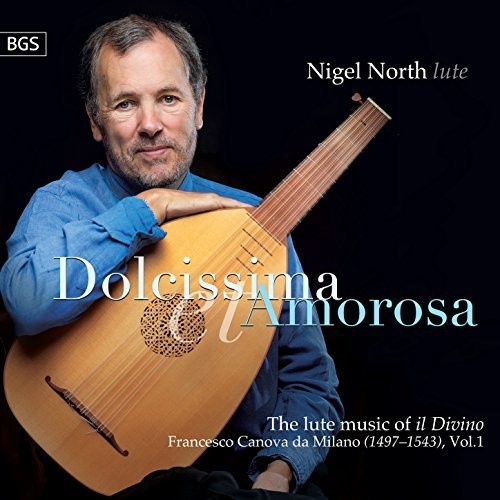
Dolcissima Et Amorosa: The Lute Music O...igel North
Era: Renaissance
Form: Ricercar/Fantasia/Lute compositions
Score: 82
Thoughts: It's quite impressive to hear the difference voicing on the same instrument. Incredibly impressive playing. There wasn't a single tune that stuck out to me and it did start to feel a bit more mathematical instead of something of the soul. Intriguing, but shallow (to me).
Info from Medieval.org:
Francesco Canova da Milano (1497-1543) was the most celebrated lutenist of the period, and one of the first composers to publish lute collections. His music is known for its grace and ethereal atmosphere.
From Gramophone:
To begin at the end: Paul O’Dette’s own tribute (Harmonia Mundi, 7/13) to that inspired miniaturist of the lute, Francesco Canova da Milano (1497-1543), aka Il Divino, closes with the same two fantasias/ricercars as does fellow lutenist Nigel North’s latest release, the first of two volumes North is devoting to the composer. On the surface, their approaches are very different. For example, and only broadly speaking, where O’Dette uses internal agogic accents to heighten expressive potential, North leans more towards allowing a phrase’s flow gently to retard as it reaches the still pool of its final tone. But both players arrive at novel ways of grouping these tiny works; both also recognise Milano’s rhetorical genius, the way he takes up a single idea and carries it, and therefore the listener, on an undeniably compelling journey.
North, whose playing is perhaps richer but also less focused and more diffuse (though in a good way) than O’Dette’s, is especially interesting here, expanding the ‘journey’ idea while referencing the traditional sonnet sequence to form five groups of (mostly) fantasias by ‘final tones, mode or thematic material’. As a result, there are journeys within journeys within journeys, Milano’s imitations, transpositions and rhythmic and other transformations revealing kaleidoscopic vistas that spark more and more associations between and among the groups of fantasias. If that makes this recording sound like some kind of drug-induced trip, perhaps on one level it is. But, joking aside, ultimately it’s North’s intense introspection and empathy that make this thoughtful programme more satisfyingly psychological than psychedelic.
|
|
|
|
|
Back to top
|
|
RoundTheBend
I miss the comfort in being sad

Location: Ground Control

|
- #128
- Posted: 08/30/2018 21:37
- Post subject:
|
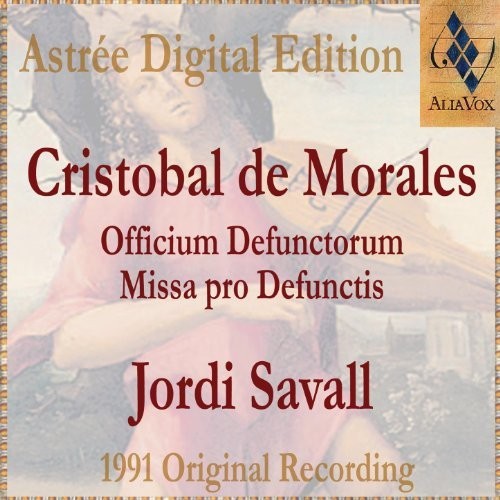
Morales: Officium Defunctorum; Missa Pr...pèrion XX
Era: Renaissance
Form: Ricercar/Fantasia/Lute compositions
Score: 80
Thoughts: Interesting introduction near the end of a very subtle sackbut and other instrumentation to sacred music. Overall though the recording didn't let that shine through much and I was a bit burned out with polyphonic vocals. Kind of wish the instrumentation shined through. Impressive though that the vocals and the instrumentation blended so beautifully well together.
Info from Archivmusic.com:
Morales's five-part setting of the Requiem is one of the masterpieces of the 16th century and was actually published twice during his lifetime. The 'Missa pro defunctis' follows the customary pattern of the time. Each section begins with a unison Gregorian intonation, which then continues as a cantus firmus in the upper part as the other voices spin a polyphonic texture underneath. The work avoids obvious madrigalisms, but maintains an austere, meditative texture, which is both spiritual and moving.
The prolific Jordi Savall and his corps perform this music so well. Featured are the men's voices of La Capella Reial de Catalunya whose warm vocal colors underscore the work's dense character. The instrumental ensemble, Hespèrion XX, does not enter until the Domine Jesu, but does so with a sublime effect--one can barely perceive the sackbuts emerging from the vocal texture as the ensemble slowly infiltrates the movement. Best known as a virtuoso on the viola da gamba, Savall has accrued an impressive body of work as a conductor that includes both instrumental and vocal performances.
Info from Gramophone:
Hesperion XX's series of recordings for the Sociedad Estatal Quinto Centenario (the body founded in 1992 to commemorate 'Columbus' year) could hardly overlook the three great figures of the Siglo de Oro: Morales, Guerrero and Victoria each have a disc dedicated to their works. Of the three, Morales was, and probably still is (despite an excellent recent Almaviva recording of his Missa Mille regretz by the Hilliard Ensemble which will become available in the UK this month), the most neglected on record, so this disc of music by him for the Mass and Office of the Dead is especially welcome.
In many ways I think it is one of Hesperion's most successful (and certainly one of the most striking) contributions to the sixteenth-century Hispanic repertory. Recorded by the male voices of Capella Reial with support from viols, sackbuts, organ and dulcian, it inhabits a sound world that contrasts strongly with any of their other recordings, including the Guerrero disc where the instrumentation is more varied and the vocal sonority often dominated by the distinctive (and distinguished) soprano of Monserrat Figueras. The scoring adopted on the Morales disc (for which incidentally, there is no firm evidence) is mournful, even lugubrious, but it suits the mood of the music so well that the overall effect, enhanced by a reverberant church acoustic, is of a lustrous velvet unremittingly black but with a rich sheen that catches the light of the musical textures. Most of the music for the Office of the Dead survives in only one source, preserved in Puebla Cathedral, Mexico. The setting is of such stark simplicity—really a chordal rendition of the chant—that the attribution to Morales, one of the great contapuntalists of his day, must be questionable, unless it was deliberately composed in this manner for performance in the New World (an undocumented but fascinating possibility). Circumstantial evidence in the form of a detailed account of the solemn funeral rites held in Mexico City in honour of Charles V in November 1559 which mentions polyphonic settings of some of these texts by Morales, and the occasional harmonic shift and cadential pattern that seem to bear his stylistic imprint, provide some support in favour of the attribution. Ultimately, however, the Requiem Mass is the more satisfying piece, although, conforming to an indigenous tradition of setting texts of this kind, it, too, is less concerned with contrapuntal skill and more with a sustained solemnity that has earned Spanish polyphony of this period the epithets 'austere' and 'mystical'. In one sense it is a shame that Hesperion XX chose to represent Morales in this way: his qualities as a composer of non-funereal music are yet to be widely appreciated. Nevertheless, this disc is so special in the sound of male voices doubled by those mellow and largely unobtrusive instruments and, above all, the atmosphere of the recording (it has the feel of the early hours of the morning about it) that I would say it is one of the best they have ever made.
The Guerrero disc is altogether another story. The blend and unanimity of tone colour achieved on the Morales disc is instantly dispelled here by the addition of the sopranos, who sing in a quite different way, and while the participation of instruments is much more easily justified in this later motet repertory of Seville Cathedral, the overall effect is not consistently successful. Something of the richness of the sonority of the Morales disc is found in the full-textured O sacrum convivium and some of the polychoral items like the terrifically exciting 12-voice Duo Serapahim work well, but too often the combination of voices and instruments serves only to muddy the contrapuntal texture and obscure the words. The instrumental playing is, as always with Hesperion XX, superb, and the purely instrumental items are among the most compelling on the disc. Savall and his team have to be congratulated for attempting to perform Guerrero's music in this way, but this recording must represent an experimental stage in which not every piece finds its best mode of expression (the eight-voice Pater Noster is an example) as almost every possible combination of voices and instruments is tried out (even within the course of one piece in the case of the Salve regina). Further research into this area is desperately needed: did instruments consistently double or substitute voices? Did the ensemble of sackbuts and cornetts (paid as a separate body by the cathedral chapter) mingle with viols as here? Did instruments participate only in certain kinds of pieces? Was there a correlation between style and instrumentation (Savall's recording tends to suggest that there was although I'm not sure that this was his intention)? What influence did his visits to Venice have on Guerrero? How and in what contexts was ornamentation used (it adds brilliance to the instrumental version of O altitudo divitiarum here)? It would have been interesting to know the rationale behind Savall's decisions. Questions of scoring aside, on one point there is absolutely no doubt: the quality of Guerrero's music—and this is a fine selection of his pieces (though with perhaps too much overlap with existing recordings). Both these recordings deserve a place in your collection: the Guerrero because it is a bold attempt to tackle an almost unstudied question of performance practice, and the Morales because, quite simply, it is so special.'
|
|
|
|
|
Back to top
|
|
RoundTheBend
I miss the comfort in being sad

Location: Ground Control

|
- #129
- Posted: 08/30/2018 22:19
- Post subject:
|
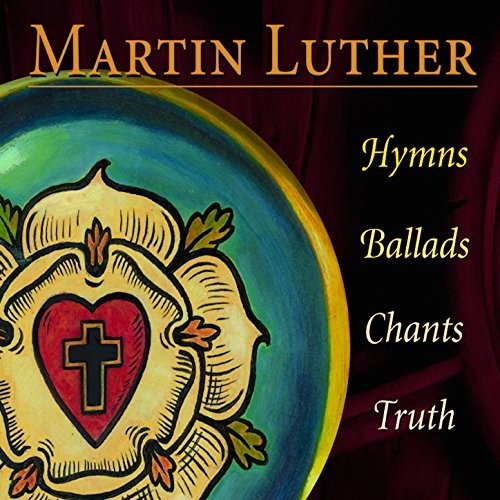
Martin Luther: Hymns, Ballads, Chants, ...llip Spray
Era: Renaissance
Form: Hymns, ballads, and chants
Score: 80
Thoughts: I have an immense respect for Martin Luther, even if I couldn't really make it past the first CD. Musically/conceptually this music really doesn't do anything for me. Although I did find it cool that this recording attempted to make it close to the music of the time as possible. Respectable effort for sure. But the dude stood up for what was right, even as a priest in the church, at the risk of death. Some of the things he wrote were terribly racist, there's no denying that. Having made that clear, he also brought a lot to the humanist movement and a love for logic, helping pave the way for many human advancements. As someone with a bachelors in German Literature, I couldn't pass this up during this project.
Info from the publisher:
This monumental recording project presents, for the first time, a complete recording of all the hymns, ballads, and chants composed or authored by Martin Luther. This four-CD set provides numerous vocal and instrumental settings combining Renaissance, Baroque, and modern instruments.
Many hymns are preceded by preludes composed by significant historic and contemporary composers. All texts are sung in English by a choral ensemble noted for vocal clarity. Historic narrative is provided, quoting Martin Luther concerning music, worship, and liturgy.
Random quote in the recording (I found this on the internet, only partial was on the recording):
In 1530 Luther wrote: "I am not ashamed to confess publicly that next to theology there is no art which is the equal of music, for she alone, after theology, can do what otherwise only theology can accomplish, namely, quiet and cheer up the soul of man, which is clear evidence that the devil, the originator of depressing worries and troubled thoughts, flees from the voice of music just as he flees from the words of theology. For this very reason the prophets cultivated no art so much as music in that they attached their theology not to geometry, nor to arithmetic, nor to astronomy, but to music, speaking the truth through psalms and hymns."
|
|
|
|
|
Back to top
|
|
RoundTheBend
I miss the comfort in being sad

Location: Ground Control

|
- #130
- Posted: 09/01/2018 02:15
- Post subject:
|
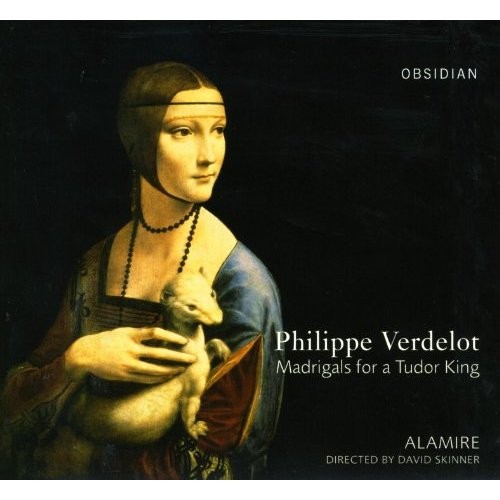
Verdelot: Madrigals For A Tudor King by...id Skinner
Era: Renaissance
Form: Madrigal
Score: 80
Thoughts: I was a bit confused on what the hell a madrigal was because I wasn't really hearing a difference between some motets, chansons, or other polyphonic vocals. It seems though that they all are closely related and most important is secular, but in those days even secular music could be religious in aspects, just not overtly something to be sung during mass. Anyway, I think I know kind of now how to tell the difference and this helped: https://owlcation.com/humanities/Music-...-Madrigals
As for the music itself, I wasn't overwhelmed with anything. It was all fine and dandy, but nothing really spoke to my soul. Great for education, but the music itself wasn't anything I'd be very interested in again anytime soon.
Info from wikipedia:
A madrigal is a secular vocal music composition of the Renaissance and early Baroque eras. Traditionally, polyphonic madrigals are unaccompanied; the number of voices varies from two to eight, and most frequently from three to six. It is quite distinct from the Italian Trecento madrigal of the late 13th and 14th centuries, with which it shares only the name.[1]
Madrigals originated in Italy during the 1520s. Unlike many strophic forms of the time, most madrigals were through-composed. In the madrigal, the composer attempted to express the emotion contained in each line, and sometimes individual words, of a celebrated poem.
The madrigal originated in part from the frottola, in part from the resurgence in interest in vernacular Italian poetry, and also from the influence of the French chanson and polyphonic style of the motet as written by the Franco-Flemish composers who had naturalized in Italy during the period. A frottola generally would consist of music set to stanzas of text, while madrigals were through-composed. However, some of the same poems were used for both frottola and madrigals.[2] The poetry of Petrarch in particular shows up in a wide variety of genres.[2]
In Italy, the madrigal was the most important secular form of music of its time. The madrigal reached its formal and historical zenith by the second half of the 16th century. English and German composers, too, took up the madrigal in its heyday. After the 1630s, the madrigal began to merge with the cantata and the dialogue. With the rise of opera in the early 17th century, the aria gradually displaced the madrigal.[3]
Info from Medieval.org:
Philippe Verdelot (c.1485-c.1550) was born in France with the surname Deslouges. He served in Florence from 1521-1527, forming the only concrete evidence of his existence. His madrigals, however, consisting of more than 100 appearing in various publications, form perhaps the most important early Renaissance output and the one on which the future development of the form was most clearly based. Verdelot is typical of composers of the period in moving from the Northern countries to Italy for employment. It was in subsequent generations that native Italian composers began to make their own mark in these genres.
Info from Archivmusic.com
It is unusual to get more than one Philippe Verdelot piece on a record, so this is a generous survey indeed. More surprising, the 30 madrigals, together with 30 motets (already recorded by another ensemble), constitute the contents of a set of part-books compiled about 1526 as a gift for Henry VIII from the city of Florence, where Verdelot was maestro at the cathedral. The notes recount the disappearance of the books, the purchase of four of them by the Newberry Library in Chicago in 1935, and their publication by H. Colin Slim in 1972. This publication led to recognition of the missing part-book at St. Mary’s, Oscott College, which Slim then transcribed.
The individual pieces are not unknown. The program leads off with Italia mia , as a Paul van Nevel collection by that title did (16:1), and ends with Ultimi mei sospiri , as did a recent disc containing Philippe de Monte’s parody Mass (32:1). In this first complete recording, we hear 28 more pieces that do not show up elsewhere. As is typical of this repertoire, we hear consort singing, solo singing with lute on the remaining lines, and lute solos for the rest. Verdelot was an early composer of madrigals and an innovator, and he is identified in the part-books on most of these pieces (the rest are assumed to be his as well). This is a fine addition to the early madrigal, which led to a century of further innovation not only in Italy but also in England.
From Gramophone
Author:
Fabrice Fitch
Verdelot Madrigals for a Tudor King
Before Arcadelt, Philippe Verdelot was the first composer whose name became significantly associated with the madrigal. This CD offers the madrigals contained in a set of part-books made in the mid-1520s for Henry VIII as a gift from the city of Florence, where Verdelot was working. It’s thought he had a hand in their compilation, and most are either ascribed to, or thought to be by, him. Particularly interesting is the way in which some pieces veer towards the French chanson, others towards imitative “motet-style” practice, and still others (for example Pur troppo, donna) to a freer synthesis of these different elements (also including antiphony) through which the madrigal first comes into its own. By later standards Verdelot’s idiom may seem a touch one-dimensional, but its freshness and directness are undeniable. Sometimes, when the poet ranges beyond the conventional love-lyric (as in Petrarch’s Italia mia), the composer, too, seems to find greater depth.
Alamire are on fine form here, alternating several performance possibilities, as on their recent recording of Josquin for this label: solo lute, lute and voice, lute and vocal consort, or consort on its own. That the top line is often paired with the lute is no surprise, but other voices were often so treated, and different ones are heard here. The solo lute option works surprisingly well because the rhythm of the words is perfectly audible even when they are not actually sung (the lyrics of all the pieces are given in the booklet, regardless of how they are performed). Not all the solo performances match the consummate polish of the ensemble, but the trade-off in the variety of approach is ample compensation.
|
|
|
|
|
Back to top
|
|
|
|
|
  |
All times are GMT
|
| Page 13 of 108 |
|
|
|
You cannot post new topics in this forum
You cannot reply to topics in this forum
You cannot edit your posts in this forum
You cannot delete your posts in this forum
You cannot vote in polls in this forum
|
|
|